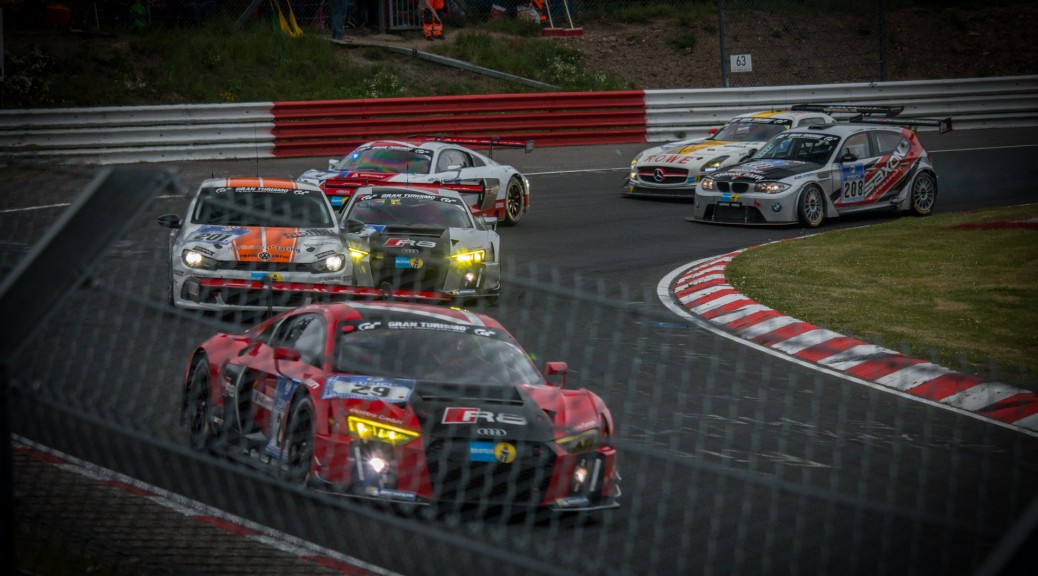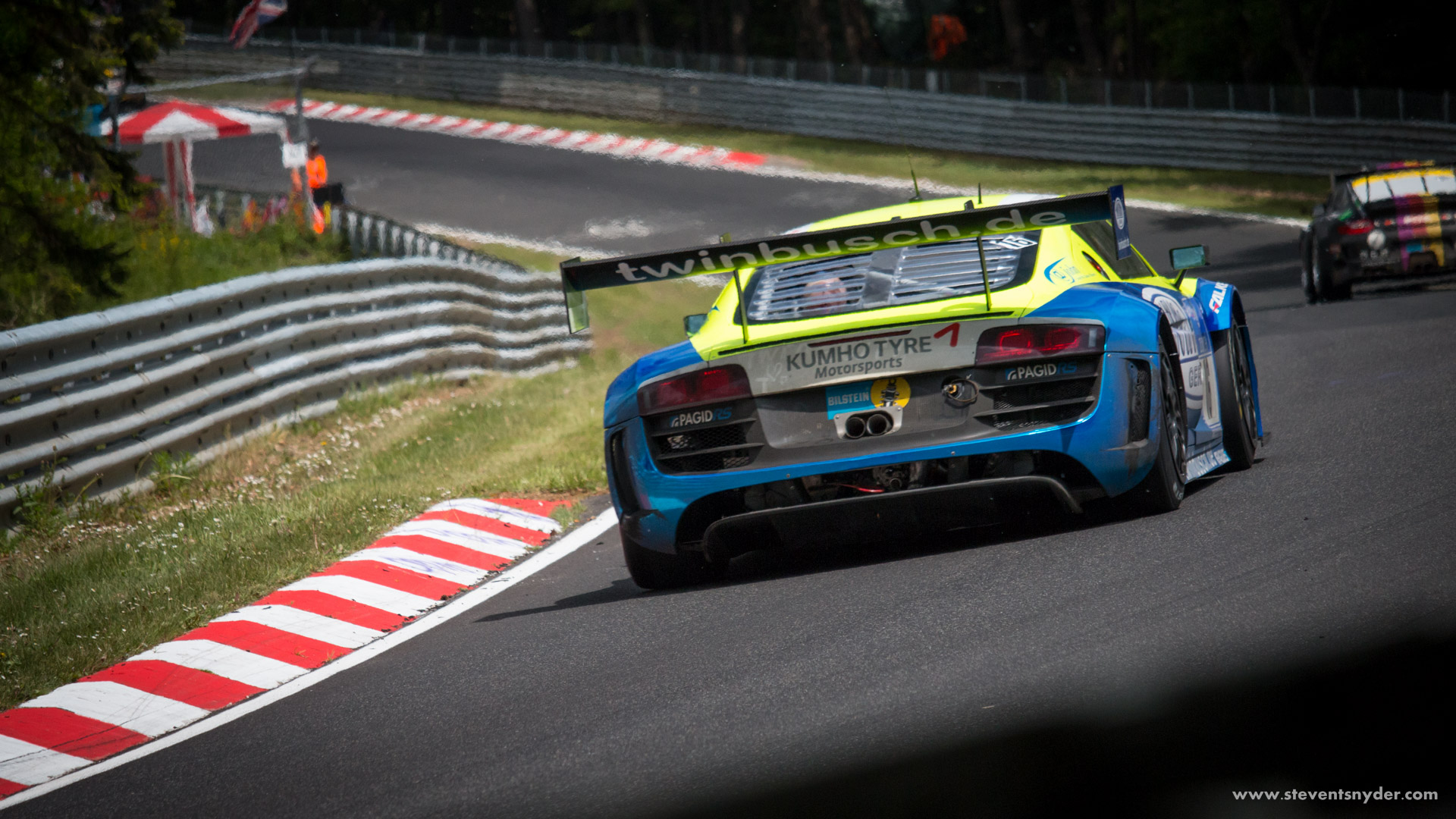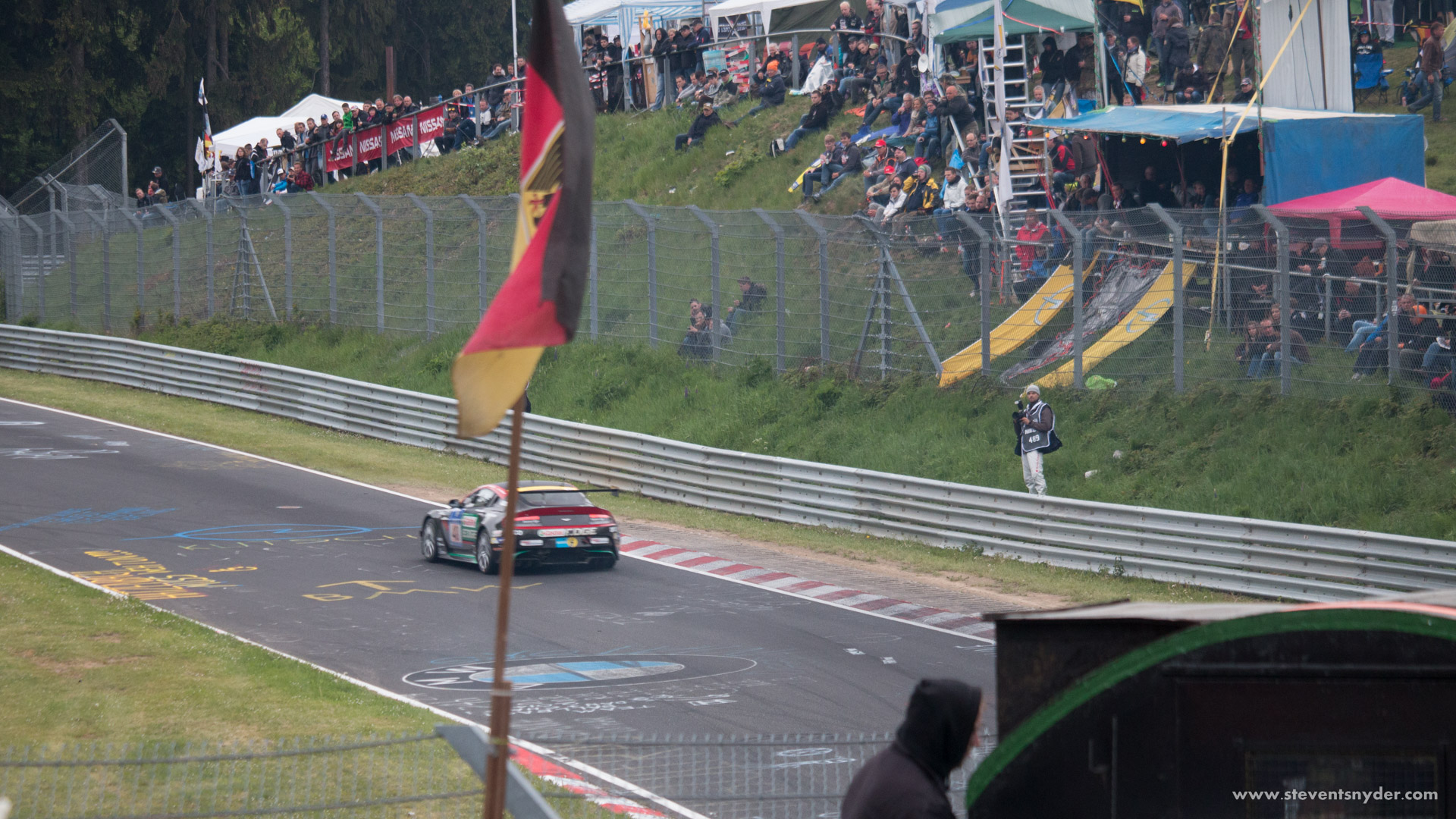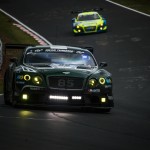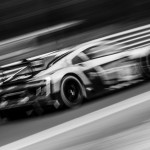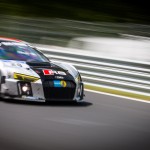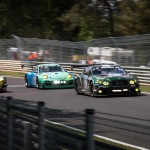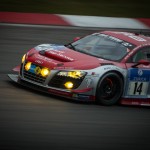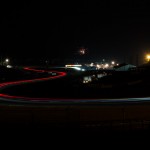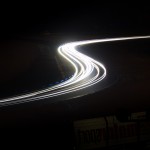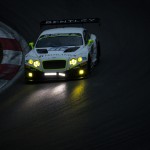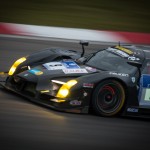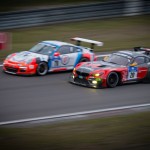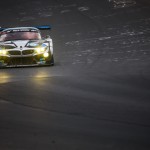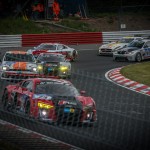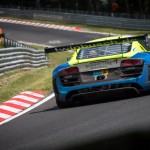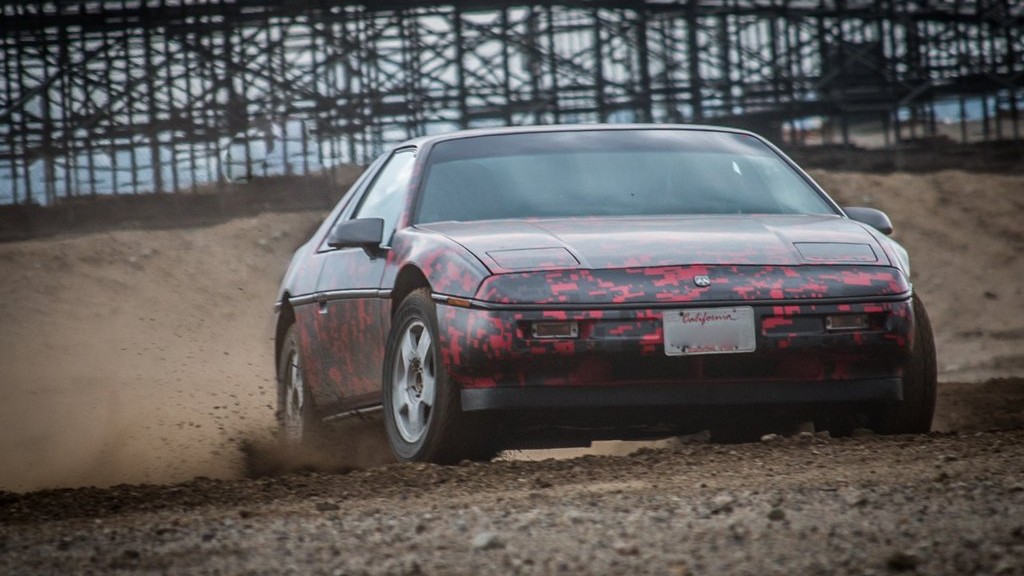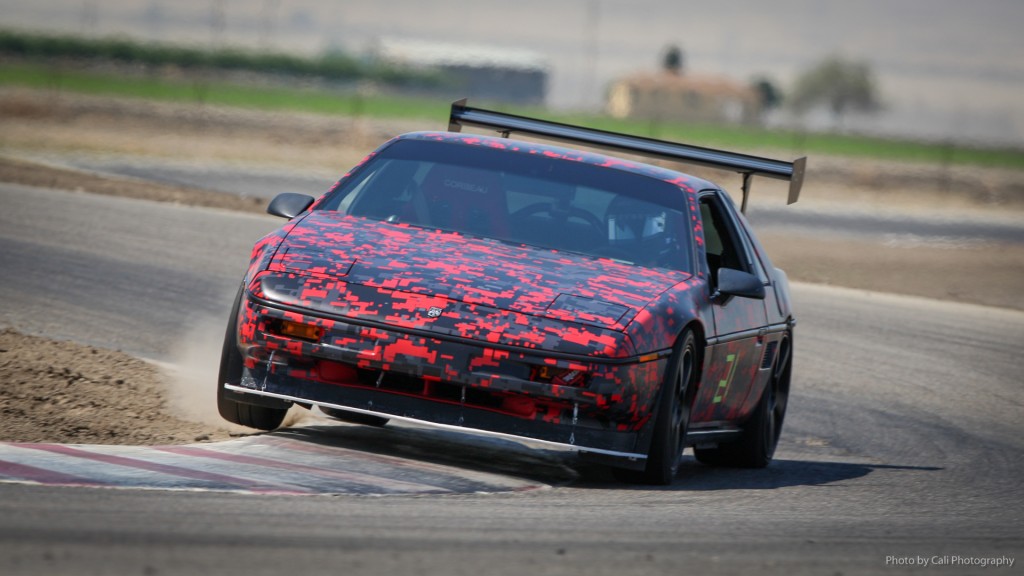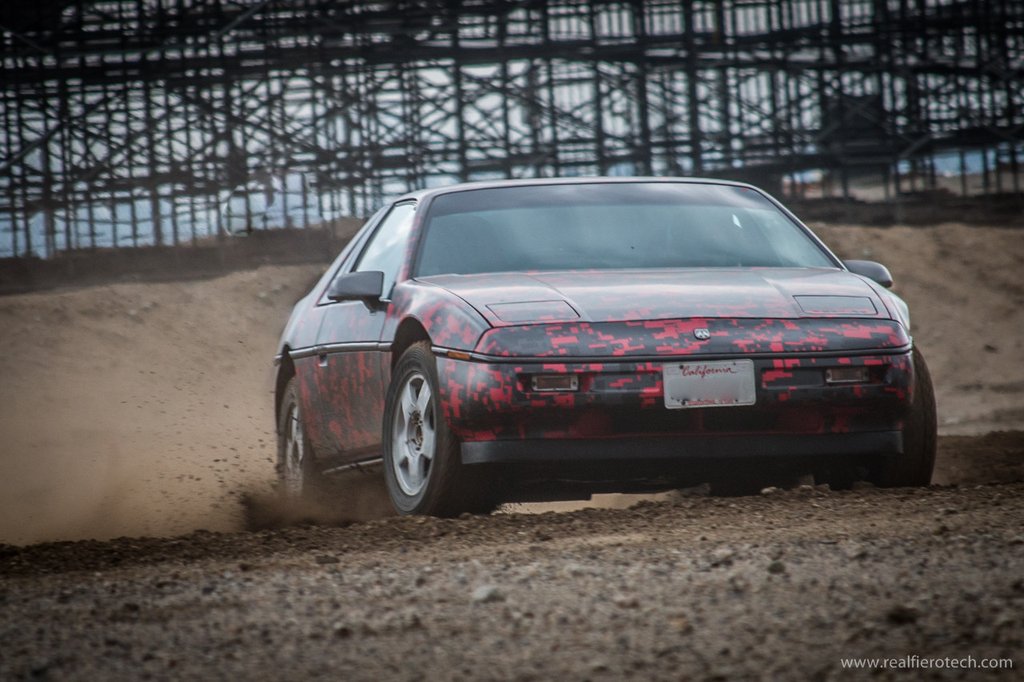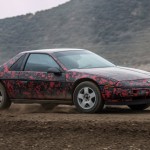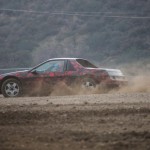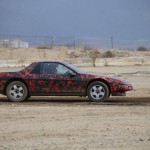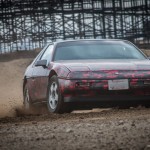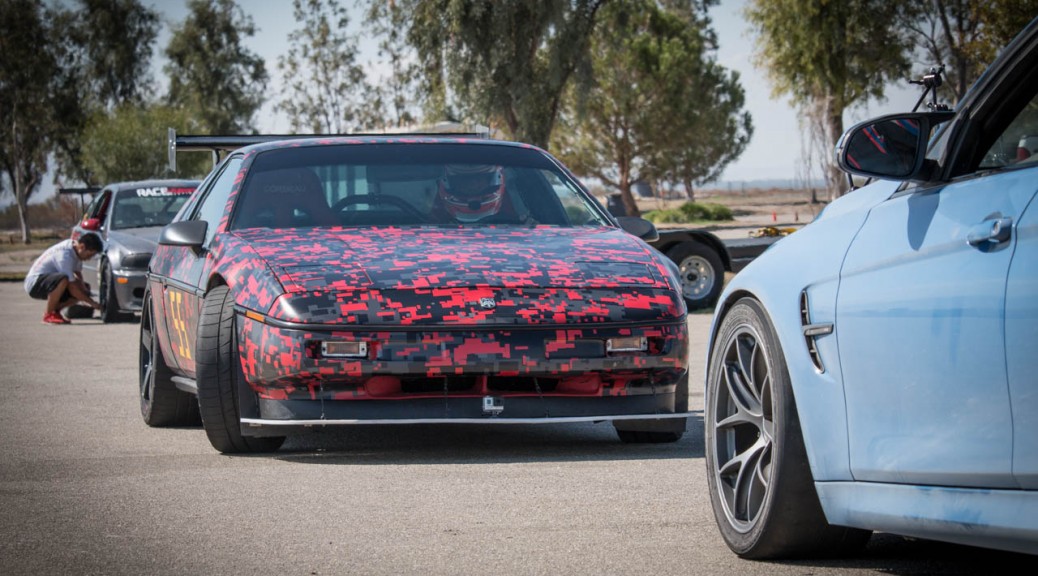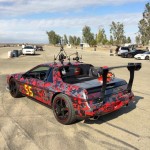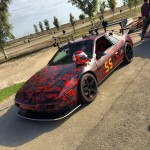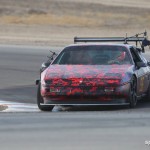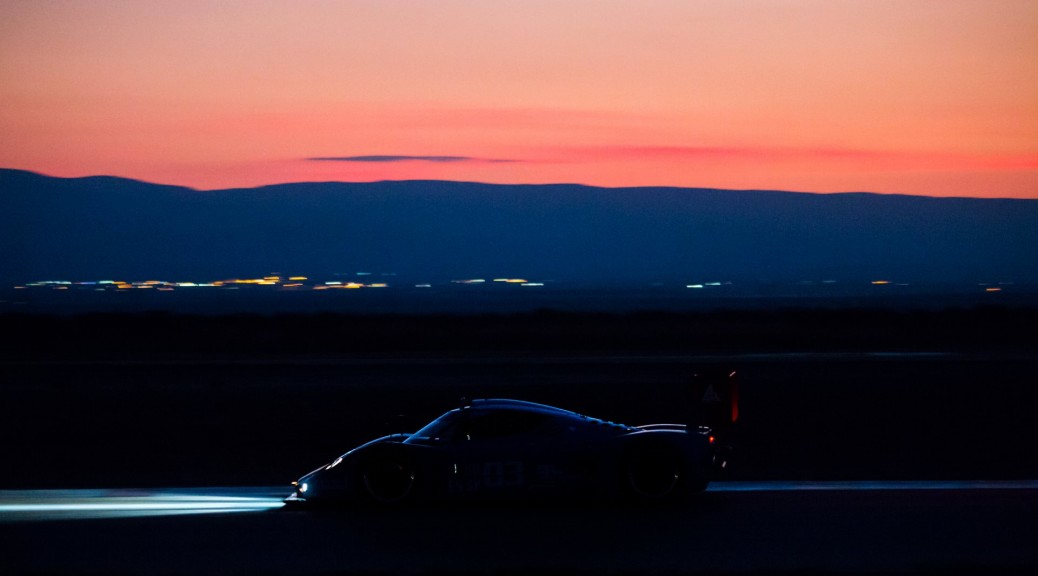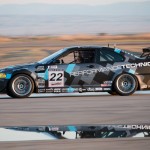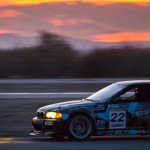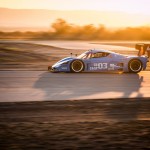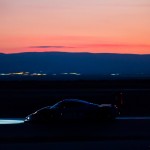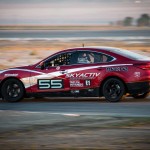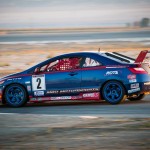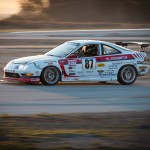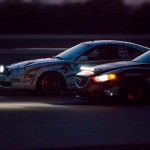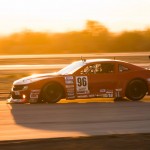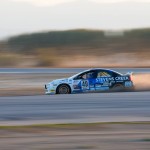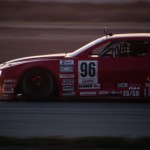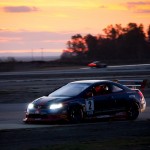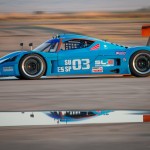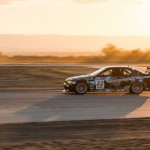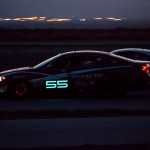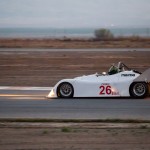The legendary Nürburgring – a massive motorsports complex within which exist entire towns. In it’s combined Nordschleife and Grand Prix course configuration, drivers face over 25 km (15.5 miles) of asphalt and over 1,000 feet of elevation change each lap.
Every year since 1970 (with only a few exceptions), the 24 Hours Nürburgring race has turned this track into a giant motorsports party. Numerous races are held on the track in the week preceding the flagship event, and thousands fans show up early to construct makeshift housing to live in for the week. With so many miles of track, there are plenty of places to set up camp and have a few of the action all day (and all night). The fans build structures that go far beyond basic campsites, including observation towers, beer huts, gardens, and dance halls.
When the Nürburgring isn’t being used for races, the public can drive it for a fee. While there are some speed limited sections, it’s still quite fast and dangerous, but motorists have to follow the normal German driving laws — such as only passing on the left. On public days, it isn’t just sports cars that show up, but everything else from delivery trucks to mopeds and tour buses.
For many visitors, the first sign of the track isn’t the catch fences, the red and white curbing, or the graffiti-covered tarmac — it’s the sound of uncorked race engines roaring through the forest. From public roads, there are very few places from which you can get a visual indication of the track, but the roads come close enough that you can easily make out the distinct sounds of the cars.
For the race start, we hiked out to the Nordkehre turn and arrived just as the green flag dropped. The race start is one of the only chances you have to see lots of cars bunched up. With a 15+ mile track, there’s a lot of room to spread out as the race goes on.
Unfortunately, fans were packed around the fence in this location and I couldn’t get close enough to a hole in the wall to fit my lens through, so we had to hike on to another spot.
We hiked a few kilometers past Nordkehre to Hatzenbach and Hocheichen. Equally mesmerising were the passing race cars and the massive fan-built encampments lining the track. Some of these were quite elaborate, with temporary grandstands, cranes hoisting up chairs, and playground slides.
And of course there were the thousands of beer bottles and cans built up into every sculpture imaginable. The Germans never run out of clever ways to use their empty beverage containers!
As we hiked past turn after turn of this immense track, we began to notice the track darkening and reflecting more of the bright lights of the GT3 cars. I checked the time and it was still many hours before sunset. Moisture was condensing onto the track, and soon it began to rain.
As the rain fell, we hiked our way back toward the Grand Prix circuit to find some good German bratwurst to warm up with and see some of the exhibitions in the visitors center.
In the week preceding the 24 Hours race, the track is constantly in use for supporting races, VIP ride-alongs, and time-trials style events. Even while the main race is running, side events are happening throughout the facility, such as this drift demonstration sponsored by Falken. We found it by following the smell and taste of tiresmoke in the air. For all I know, these guys have been drifting for spectators every day for the past week. I wonder how much rubber they’ve gone though?
After picking up some souvenirs in the visitor center we moved on to the Grand Prix circuit, which connects to the Nordschleife to form the full course used in the 24 Hours race. It’s interesting to see the stark contrast between the concrete and gravel traps Grand Prix circuit and the green, hilly, country-road-turned-race-track Nordschleife.
As the sky darkened, you could begin to make out the subtler lighting on the cars, such as the red-hot brake rotors coming into the braking zone for Dunlop-Kehre.
The lights on the faster cars were stunning at night — the yellow-tinted lamps make it clear to slower drivers that faster cars are approaching in their mirrors, and the top qualifiers have the addition of bright blue strobes in the corner of the windshield to further facilitate easy passing of outclassed cars.
After a dinner break, we returned to the track with full stomachs and full darkness.
Some small professional fireworks gave life to the outskirts of the track in some areas, but as midnight passed you could tell that most people were hunkering down and getting some sleep before morning.
Except in the dance club tents of course. Yes, there were tents with DJs at turntables blasting beats through the night for those that refused to sleep in the presence of such a grand race.
On day 2, we hiked to the Karussel. Access to much of the track by car requires driving on dirt roads and logging trails, which are off limits to travel by the general public during the race, except on foot. It was a beautiful walk through the forest, with the sounds of race cars in the distance.
When we reached the Karussell we found out we couldn’t actually get a view of it without a media pass, because there was no catch fence on the outside of the track.
Unfortunately, there is no high ground on the outside of the Karussel beyond the restricted zone, so the best we could do was watch cars exiting the turn.
If we wanted to see the concrete slabs of the Karussell itself we’d have to hike 45 minutes back to the car and then drive an hour through traffic to park on another trail, where we’d have to hike a few miles to get to the inside of the turn.
Instead of heading back, we hiked further up the trail running parallel the track, and found some tree stumps to stand on and get a better view. Standing on a stump by the left kink after the Karussell, we were incredibly close to incredibly fast cars without a fence blocking our view. Awesome!
As last hour of the race was winding down, we decided it was time to hike back to the car so we could miss the huge crowds on the way out.
Our last walk through the beautiful Green Hell took us past our final view of Nurburg Castle, which has overlooked the region for nearly 900 years.
For years I’ve dreamed of driving on the Nürburgring and attending the 24-hour endurance race. This year, I finally had the opportunity to watch the event during a 3-week trip to Europe. I had only a limited amount of time at the Nurburgring itself, so I wasn’t able to stay long enough before or after the race to be able to make it on track during a public day, but I know I’ll be back someday.
